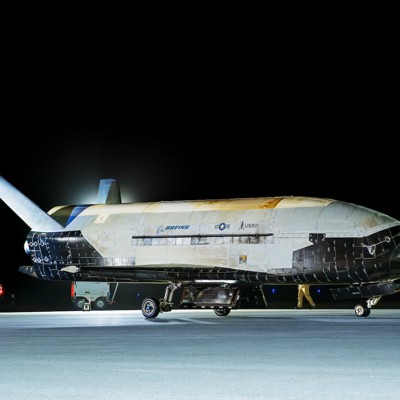A U.S. spaceplane will head to the heavens next month to test a quantum sensor that could help navigation in orbit without GPS, and to demonstrate new methods of space-based communications, the Space Force said in a release today.
The X-37B Orbital Test Vehicle has been used by the U.S. military for over a decade to experiment with new technologies in space, but details around the program’s missions have largely been kept secret.
The Space Force has been releasing more information about the X-37 in recent years, and announced that the upcoming launch—the spacecraft’s eighth known mission—would test the “world’s highest performing quantum inertial sensor ever used in space.” The Pentagon has been eyeing quantum sensing as a new way to navigate in GPS-denied environments.
The mission will also demonstrate laser communications with commercial satellites in low Earth orbit. Laser communications are more secure and can send more data than traditional radio frequency transmissions.
“OTV-8’s laser communications demonstration will mark an important step in the U.S. Space Force’s ability to leverage proliferated space networks as part of a diversified and redundant space architectures. In so doing, it will strengthen the resilience, reliability, adaptability and data transport speeds of our satellite communications architecture,” Chief of Space Operations Gen. Chance Saltzman said in a statement.
During the program’s last mission, the spaceplane flew for over 400 days and tested a new maneuver called aerobraking, which uses Earth’s atmosphere to slow down and quickly change orbits, and reduces the amount of fuel expended.
The eighth mission will launch Aug. 21 from Kennedy Space Center in Florida on a SpaceX Falcon 9 rocket.
Read the full article here

